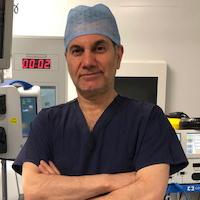More commonly known as a “nose job”, a rhinoplasty is a procedure that can be considered for functional and aesthetic purposes. It is related to changing the shape or proportions of the nose. Typically, it’s done for cosmetic reasons, but there are actual medical benefits that can come from a rhinoplasty as well.
There are two techniques or approaches to perform a rhinoplasty. Each technique deals with certain aspects and parts of the nose to achieve the desired outcome of the surgery. Therefore, it is important to discuss with your surgeon your requirements that you are hoping to achieve from the rhinoplasty as this will determine which technique is best for you to obtain the best outcome from your surgery. Here’s what you should know about the two types of rhinoplasty techniques and what they can do for you.
- Open Rhinoplasty: This is a nose surgery that is done by opening up the nose between the nostrils with skin incision. It allows good exposure to the structures of the nose including the cartilages and nasal bones. It is often used for reshaping and advanced restructuring of the nose. Its open design allows the specialist access to everything openly and easily all from one incision. There is a possibility of some scarring that, when done professionally and cared for properly, can disappear with time.
- Closed Rhinoplasty: In this case, the surgery actually happens through incisions on the inner side of the nostrils. This kind of surgery is intended for those smaller changes where full access isn’t required.
Which rhinoplasty approach do I need?
After your consultation with your surgeon to discuss the aim and requirements from the procedure, your surgeon will recommend the best technique for you. As with any other procedure, it is a case-by-case process to decide which is best for each patient and their expectations for the surgery. As well, some surgeons will recommend one type or the other based on their own experience and preferences, too, which factors into the patient making the best decision for them or not.
A rhinoplasty has a detailed pre-op and post-op plan to be followed by both surgeon or specialist, and patient. Following all of the steps in all of the different parts of the surgery means that its outcome will be the best possible, and the healing process will also be its best and fastest. Understanding the different kinds of rhinoplasties, and what each can be used for, can help you feel more informed when you are considering a rhinoplasty.

